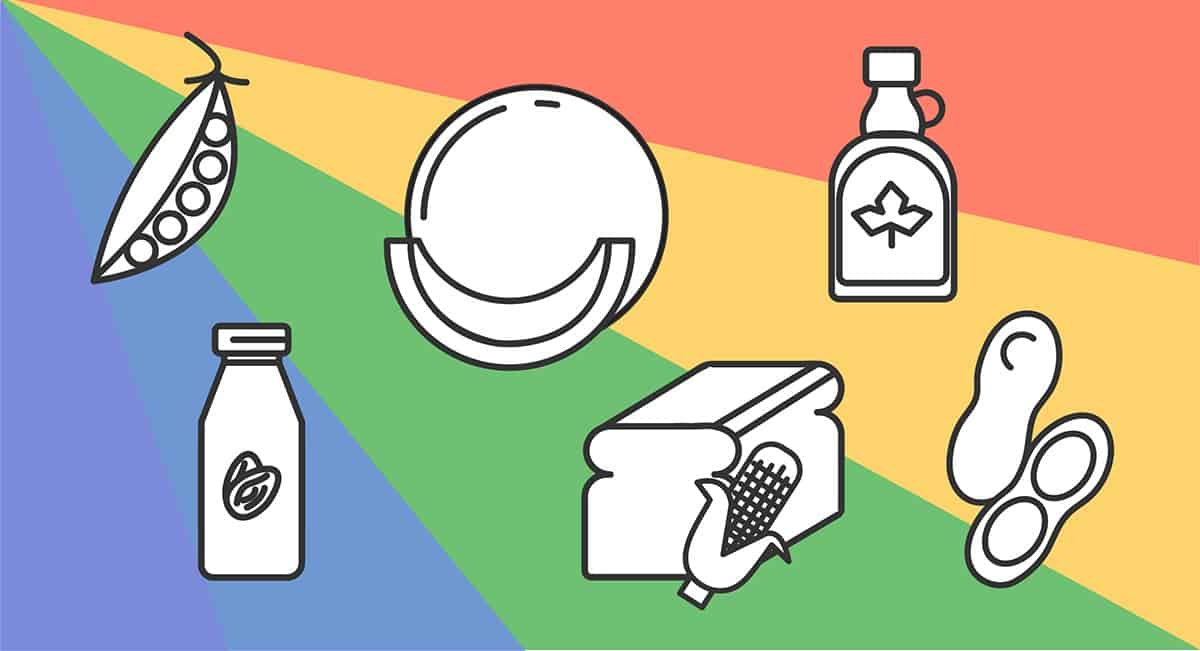
Larah Brook developed embarrassing digestive problems soon after she turned 40. “The bloating was constant with peaks soon after each meal, and the numerous trips to the bathroom were wearing me down,” she explains on her blog.
Eventually, a physician diagnosed Brook with Irritable Bowel Syndrome (IBS), a condition that affects 10 to 15 percent of people. The symptoms include chronic or relapsing abdominal pain, bloating, diarrhea, constipation, and/or cramping.
Brook’s doctor referred her to a registered dietitian, who put Brook on an elimination diet called the Low FODMAP Diet. Within days, Brook saw an improvement in her symptoms. Her life changed so much that she now dedicates time to blogging and podcasting about her experience, challenges, recipes, and other related topics. Could the Low FODMAP Diet help you too? Keep reading to learn what it entails, and discover whether you may benefit from it.
What’s the Low FODMAP Diet?
FODMAPs (pronounced fahd-maps) is an acronym that stands for fermentable oligosaccharides, disaccharides, monosaccharide, and polyols. These are types of carbohydrates that are slowly absorbed or not digested in the small intestine and then fermented in the large intestine. Foods high in FODMAPs have been linked to gastrointestinal issues for certain people.
- Lactose: A sugar found in milk and other dairy products
- Fructose: A sugar found in many fruits and vegetables, as well as honey and high fructose corn syrup
- Fructans: Carbohydrates found in onions, garlic, artichokes, broccoli, beets, wheat, barley, rye, and other foods
- Galactans: Carbohydrates found in some legumes, including baked beans, kidney beans, and garbanzo beans
- Polyols: Sugar alcohols, such as sorbitol and mannitol, found in stone fruits such as peaches and apricots, as well as pears, mushrooms, artificial sweeteners, and other foods
A team of dietetic researchers at Monash University in Australia, who theorized that IBS may develop when sensitive people eat a combination of FODMAPs, developed the Low FODMAP Diet in 2004. The diet improves symptoms for up to 86 percent of patients with IBS, according to studies conducted in the years since.
The Three Stages of the Low FODMAP Diet
The goal of the Low FODMAP Diet is not to banish all FODMAPs long-term. Many FODMAP food sources are nutritious and have important benefits. And some are prebiotics, meaning they promote the growth of beneficial microorganisms in the intestines. Plus, most people are only sensitive to certain FODMAPs. The diet is a three-part process to determine which FODMAPs trigger symptoms for a particular person. It’s best embark on the diet under the guidance of a registered dietitian, and insurance may cover the cost. If you decide to try it, here are the general steps you can expect to follow.
- Restriction
First, you remove all high-FODMAP foods from your diet until your gastrointestinal symptoms resolve. An app developed by Monash University makes this part easier by listing which foods to eat and avoid and providing low FODMAP recipes. It usually takes three to eight weeks for people’s symptoms to resolve, but some people experience relief within days.
- Reintroduction
Next, you add high-FODMAP foods back into your diet one group at a time for three days each to see which FODMAPs trigger your symptoms. At the same time, you’ll determine a threshold level at which you can eat foods within that category without symptoms. Meanwhile, you’ll restrict all other high-FODMAP foods, even those you’ve discovered you tolerate well.
- Personalization
Once you know which foods you’re sensitive to and how much of them you can eat without symptoms, you tailor your diet accordingly. Now you can add back high-FODMAP foods you tolerate well.

Is the Low FODMAP Diet for You?
The Low FODMAP Diet isn’t for everyone. Here are some reasons you may want to try it.
- You’ve been diagnosed with IBS, Small Intestinal Bacterial Overgrowth (SIBO), or Inflammatory Bowel Disease (IBD).
- You’re working with a registered dietitian who recommends the diet.
- You’ve tried other healthy-living strategies to eat well and relieve stress, but you still have gastrointestinal symptoms.
On the other hand, the diet may not be right for you if any of the following ring true for you.
- You’re looking for a weight-loss diet.
The goal of the Low FODMAP Diet is to reduce gastrointestinal symptoms. You may lose weight during the first stage, but it’s too restrictive to be healthy long-term.
- You’re traveling or under stress.
The diet requires time and dedication because there are so many high-FODMAP foods to avoid. It’s best to try it when your life is relatively calm.
- You’re at risk for an eating disorder.
Restrictive diets may be dangerous for anyone with an eating disorder or anyone who’s at risk of developing one.
- You’re pregnant, nursing, elderly, or very young.
If any of these apply, check with your dietitian before undertaking the Low FODMAP Diet.
Conclusion
Gastrointestinal distress can ruin your life. Seventy-six percent of people with IBS report a high degree of impairment in their daily activities such as exercising, socializing, and traveling. If you suffer from chronic symptoms such as bloating, indigestion, nausea, diarrhea, or constipation, the Low FODMAP Diet may help you find long-lasting relief without any side effects.